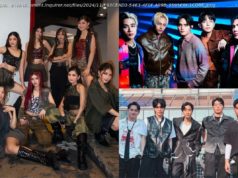There’s a fine line between being a musician and an idol.
There’s a fine line between being a musician and an idol.
We’ re all familiar with the latter, as K-pop grew from a genre into a cultural lifestyle. The global music phenomenon turned its fans to loyalists who call themselves either a “stan” or “trash” of countless “biases.”
In English, these K-pop listeners have turned into obsessive fans, identifying themselves as belonging to multiple fan bases of idols from different entertainment companies.
It’s easy to spot an idol. Usually belonging to a group, idols often sport identical or thematic clothing. Their crazy-colored hairdos also make them hard not to miss. They also have synchronized group greetings that, by now, fans have memorized.
Fans look forward to each idol group’s comebacks, and these dictate the next concept the group partakes. Each concept is a representation of something new and fresh—making idols change into skin that are always crazier than the last.
We also know how a K-pop star’s story usually begins: They audition in their early teens and spend years training to finally debut as an idol.
Idols are groomed to become what they are today. While we get a glimpse of their personality on variety shows, short interviews and behind-the-scenes clips, a bulk of their image is built on trends and strategies.
They sing chart-topping music that take the global stage by storm, but how much of the music actually resonates with those that perform them?
On the other side of K-pop are Korean musicians who are starting to give idols a run for their money. The country’s current music trend is shifting the focus on individual artists.
K-pop undeniably redefined the music industry, but its local market recognizes the need to go back to basics: Discovering artists who create their own content, and honing homegrown talent that no longer needs to be dictated upon. And the rest of the world is starting to take notice, too.
They call it the “artist-leading trend” where musicians take complete control of the different aspects that concern their craft. The perfect example of the industry trend is the unprecedented but well-deserved success of the Bangtan Boys or BTS.
The independent boy group is known to compose their own lyrics, produce their own music, and even choreograph their own dance routines—and the tedious work obviously pays off as they soar into the global scene.
Korea’s solo artists have long followed the similar practice—the artists dictate the pace and direction of their own music and content. However, the industry now seems to put more emphasis on this artist-leading trend.
This year, global record label Universal Music, which also has alternative R&B artists DEAN and SAAY under their wing, has launched their first Korean label On The Record that focuses solely on artists.
The label currently has signed five musicians, namely YEIN, TAEK, yooncell and the acoustic duo 1415, and it plans to scout more capable singer-songwriters.
For the label, there is absolutely no factor that determines what makes a musician but talent. The mix of artists under On The Record is so diverse—they come from various age groups and backgrounds, each identifying with interesting genres.
While these artists still work with unique concepts to strengthen their musical image, these so called “images” still strongly reflect who they are as individuals.
All five artists are hands-on from the production of their tracks to music videos. They have a strong say on the producers, even visual artists, they collaborate with for the work they put out.
The artists’ compositions make up their musical DNA, establishing an identity built on their own work. More importantly, there is nothing that defines the contours of what they can do.






